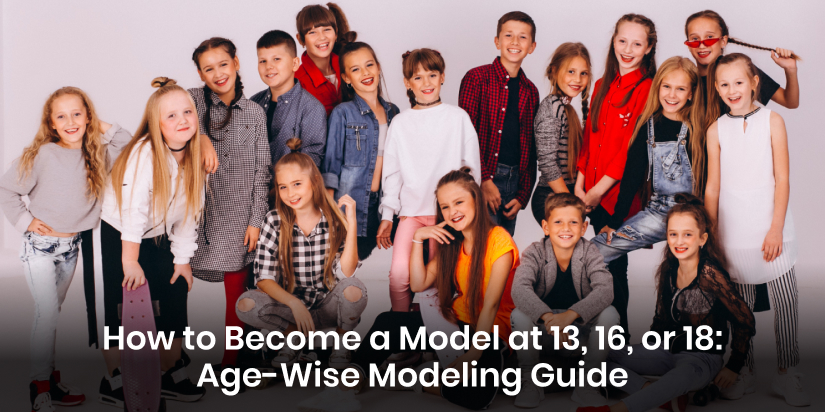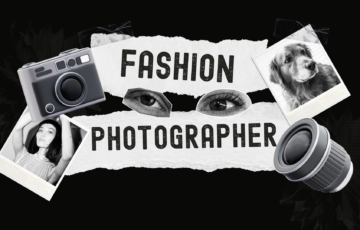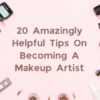The world of fashion is captivating. From the glossy pages of magazines to the dazzling energy of the runway, the dream of becoming a model inspires many. But how does one turn that dream into a reality? The path isn’t always clear, and the steps can change dramatically depending on age. Whether you’re a fresh-faced 13-year-old, an ambitious 16-year-old, or a young adult 18 years old, ready to take the industry by storm, the journey requires dedication, knowledge, and a strong support system.
At Dazzlerr, we believe in empowering aspiring talent with honest, practical advice. This comprehensive, age-wise modeling guide will walk you through the essential steps, from building your foundation to approaching reputable modeling agencies. This isn’t just about striking a pose; it’s about creating a career with intelligence and safety at its core.
The Universal Foundation: What Every Aspiring Model Needs to Know
Before we dive into the age-specific advice, universal truths and foundational steps apply to every aspiring model, regardless of age. Mastering these basics will set you up for success and help you navigate the modeling industry confidently.

Understand the Different Types of Modeling
The term “model” is broad. Knowing the different niches will help you identify where you might fit best.
- High-Fashion (Editorial/Runway): People often picture this first. These models work for top designers and appear in prestigious magazines like Vogue and Harper’s Bazaar. There are strict height (usually 5’9″+ for women, 6’0″+ for men) and measurement requirements.
- Commercial Modeling: This is the largest and most diverse sector. Commercial models are relatable and appear in advertisements for many products and services, from toothpaste to technology. A wider range of acceptable looks, ages, and body types exists.
- Print Modeling: This involves posing for catalogs, brochures, billboards, and other print materials. It often overlaps with commercial modeling.
- E-commerce Model: With the rise of online shopping, e-commerce models are in high demand to showcase clothing and products on websites.
- Parts Modeling: Do you have perfect hands, feet, or hair? Parts models specialize in showcasing specific body parts.
Health and Wellness Are Your Greatest Assets
A successful modeling career is built on a foundation of health. This isn’t about extreme dieting but a sustainable, healthy lifestyle.
- Skincare: A clear, healthy complexion is crucial. Develop a simple but effective skincare routine: cleanse, moisturize, and always use sunscreen.
- Nutrition: Focus on a balanced diet rich in fruits, vegetables, lean proteins, and whole grains. Proper nutrition fuels your body and gives your skin a natural glow.
- Fitness: Engage in regular physical activity that you enjoy. This helps with posture, muscle tone, and overall stamina, which are essential for long shoot days.
Practice, Practice, Practice
Modeling is a skill. Study poses in magazines and online, but don’t just copy them—understand them. Practice in front of a mirror to learn your angles. How does your face look when you smile naturally versus when you give a serious expression? How does shifting your weight change the line of your body? The more comfortable you are in your skin, the better you will perform in front of a camera.
How to Become a Model at 13: The Foundation Phase
Starting at 13 is all about building a foundation and gaining experience in a safe, controlled way. School and personal development are the top priorities at this age, and any modeling activities should complement, not consume, your life.
Parental Guidance is Non-Negotiable
Parental involvement is paramount for any teen model, but especially at 13. Parents or legal guardians must be involved in every step, from communicating with agencies to attending shoots. They are your primary protectors and advocates in the modeling industry. This is a key element of model safety.
Focus on a Natural Look
Agencies looking for a 13-year-old model want to see potential. They are not looking for a polished adult. Heavy makeup, elaborate hairstyles, and overly stylized clothing are discouraged. The goal is to present a clean, natural, and authentic version of yourself. Your personality and potential will shine through.
Building Your First “Book” (Portfolio)
At this age, you do not need an expensive professional model portfolio. You need clear, simple snapshots, often called “digitals” or “polaroids” in the industry.
- What You Need: Simple headshots (smiling, neutral) and a few full-length body shots.
- How to Take Them: Wear simple, form-fitting clothing like a plain t-shirt and jeans. Use natural daylight (stand facing a window) against a plain, uncluttered background. No makeup, no filters, and have a parent or friend take the photos.
Finding the Right Opportunities
At 13, focus on local opportunities. Approach reputable, local modeling agencies that have a youth or teen division. Avoid any “agency” that asks for hefty upfront fees for classes, photoshoots, or representation. A legitimate agency makes money by taking a commission from the jobs they book for you, not by charging you to join.
The jobs available for a teen model at this age are typically local print ads, catalogs for department stores, or small-scale commercial work.
How to Become a Model at 16: The Development Phase
At 16, you can approach modeling more seriously and professionally. You’d better understand yourself; agencies will view you as an emerging talent with more immediate potential.
Balancing Ambition with Education
While the allure of a modeling career can be strong, completing your education is vital. Many successful models finished high school while starting their careers. Good time management and open communication with your school and agency are key. A strong education provides a crucial fallback and valuable life skills in any profession.
Investing in a Professional Portfolio
Now is the time to consider investing in your first professional model portfolio. While digitals are still essential, a “book” with high-quality images from a professional photographer specializing in model portfolios can make a significant difference. Research photographers thoroughly and work with someone who understands the looks agencies want to see (a mix of commercial and fashion-forward shots).
Approaching Reputable Modeling Agencies
With a stronger portfolio, you can start reaching out to larger, more established agencies in major markets, not just local ones. Most reputable modeling agencies have online submission forms on their websites. Follow their instructions precisely. If they are interested, they will contact you. It’s also possible to attend open calls, which are specific times when agencies meet with aspiring models. Check their official websites for dates and requirements.
Understanding the Business Side
If an agency offers you a modeling contract, review it carefully with your parents and consider consulting with a lawyer who understands entertainment contracts. Understand commission rates (typically 20% for the agency), the length of the agreement, and what is expected of you.
How to Start Modeling at 18: The Professional Launch
Turning 18 marks a significant transition. You are now a legal adult, bringing freedom and immense responsibility. This is often the age when a modeling career can truly launch professionally, but it also comes with new challenges.
Making Strategic Career Decisions
As an adult, you are in the driver’s seat. This is the time to decide if you want to pursue modeling full-time. For many, this means considering a move to a major fashion hub like New York, Paris, Milan, or Los Angeles. This is a significant financial and personal commitment that requires careful planning.
High-Fashion vs. Commercial Paths
At 18, your path will likely become more defined.
- The High-Fashion Model: If you meet the stringent height and measurement requirements, you can focus on getting signed with top-tier fashion agencies. This path involves casting calls for major runway shows and editorial shoots. The competition is fierce, and resilience is mandatory.
- The Commercial Model: If your look is more versatile and relatable, commercial modeling offers a vast and often more lucrative career path. Building strong relationships with commercial agencies and casting directors is key.
Professionalism is Everything
Your reputation will be your most valuable currency. Be on time for every casting and job. Respect everyone on set, from the photographer to the assistants. Be prepared, follow directions, and maintain a positive attitude. The modeling industry is smaller than you think, and word travels fast.
Managing Your Finances
As you begin to earn money, financial literacy becomes crucial. You are an independent contractor, which means you manage your income, save for taxes, and plan for your future. Consider working with an accountant who has experience with freelance or entertainment clients.
Essential Guide: How to Avoid Modeling Scams
Unfortunately, the desire to get started in modeling can make aspiring talents vulnerable to scams. Protecting yourself is the most important part of your journey. Here are red flags to watch for:
- Upfront Fees: Legitimate agencies do not charge you for representation. Their income is a commission from the paying jobs they book for you. Be wary of anyone demanding money for “sign-up fees,” “website inclusion,” or mandatory classes.
- Guarantees of Work: No one can guarantee you a modeling job. The industry is based on clients choosing models for specific projects. Promises of fame and fortune are a huge red flag.
- Pressure to Use a Specific Photographer: While an agency may recommend photographers they trust, they should not force you to use one, especially if the photographer’s fees seem inflated or are paid directly to the agency.
- Unprofessional Communication: A reputable agency will have a professional website, business email addresses, and a physical office address. Overly casual communication, use of personal email accounts (like Gmail or Yahoo), or evasion of their client list is suspect.
Conclusion: Your Path, Your Pace
The journey to becoming a model is a marathon, not a sprint. At 13, it’s about learning and exploration. At 16, it’s about development and honing your craft. At 18, it’s about launching your professional career with maturity and strategic vision.
No matter your age, the pillars of success remain the same: professionalism, persistence, a healthy lifestyle, and an unwavering commitment to your safety. The modeling world is competitive, but for those who approach it with intelligence and realism, it can be an enriching experience. The team at Dazzlerr encourages you to follow your dreams, armed with the proper knowledge to navigate the path ahead successfully.













